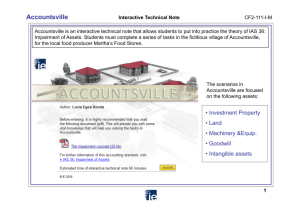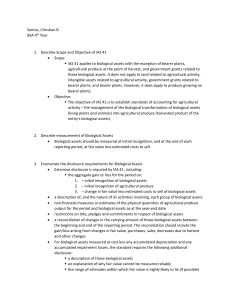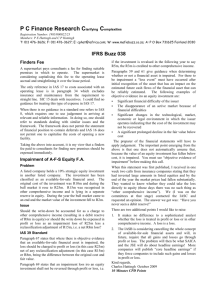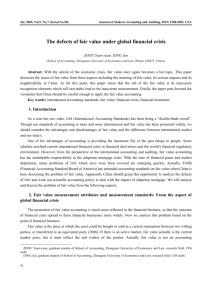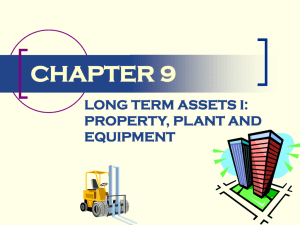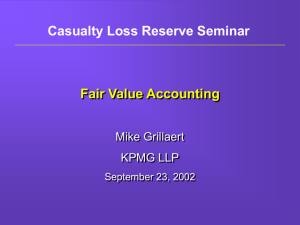ch.9
advertisement
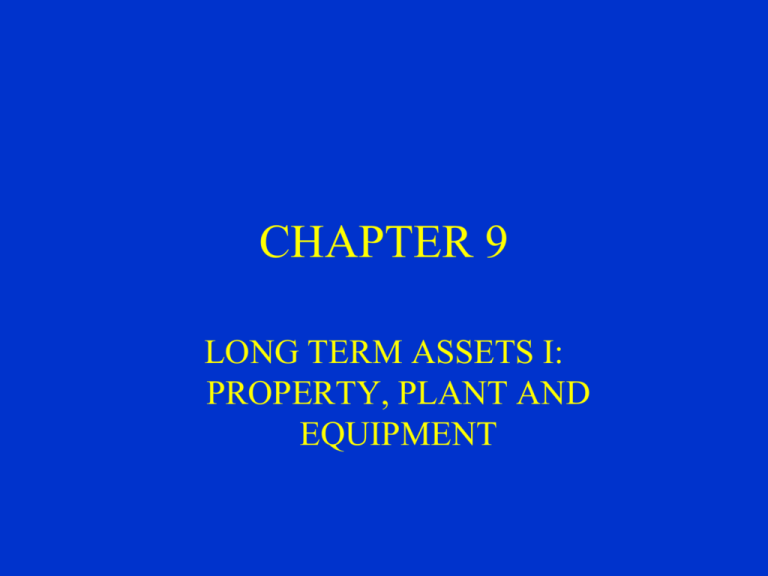
CHAPTER 9 LONG TERM ASSETS I: PROPERTY, PLANT AND EQUIPMENT Property, Plant, and Equipment • These items represent a major source of future service potential • Valuation is important because it indicates to financial statement users the physical resources available to the firm and may give some indication of future liquidity and funds flow. • Objectives 1 2 3 4 5 Accounting and reporting to investors on stewardship Accounting for the use and deterioration of plant and equipment Planning for new acquisitions, through budgeting Supplying information for taxing authorities Supplying rate-making information for regulated industries Accounting for Cost • Initial cost represents sacrifice of resources given up now to accomplish future objectives • Preferred measurement technique is discounted present value of future receipts Indicates future services potential • Acquisition cost implies that this process has taken place Accounting for Cost • – – – – – Some problems Group purchases Self constructed assets Removal of existing assets Non-monetary exchange Donated or discovery values Financial Analysis of Property, Plant and Equipment • Company’s asset replacement policy • Examine investment activity is the statement of cash flows Cost Allocation • Capitalization implies future service potential • The matching concept requires expiration of future service potential to be recorded in the period incurred • This is termed cost allocation • Since actual expiration of future service potential is difficult to ascertain - method of cost allocation should be systematic and rational • Depreciation is a form of cost allocation The Depreciation Process • Issues: 1 Establishing the proper depreciation base 2 Determining useful service life 3 Choosing a cost allocation method – – – – – – Straight-line Accelerated Units of Activity Group and composite Retirement and replacement Compound interest Capital Vs. Revenue Expenditures • Question is whether to capitalize or charge to expense expenditures required for an existing long-term asset • Criteria – Prolong life or increase efficiency - capitalize – Ordinary and necessary - expense Recognition and Measurement Issues • User needs are currently not being satisfied • Suggests a current value approach International Accounting Standards • The IASC has issued pronouncements on the following issues: 1 Property, plant and equipment in IAS No. 16, “Property, Plant and Equipment.” 2 Interest capitalization in IAS No. 23, “Borrowing Costs.” 3 Impairment of assets in IAS No. 36, “Impairment of Assets.” IAS No. 16 • Recognize items as assets when economic benefit will flow to enterprise and cost can be measured • Preference is to depreciate historical cost of assets • But, allows revaluations to current market value • Requires recording of impairments • Depreciation charge should reflect pattern of benefits • If change in pattern of benefits is noted, change depreciation method to reflect new pattern FASB Staff Review of IAS No 16 • Several differences: 1 Revaluation of assets distorts intercompany comparability 2 Unclear and inconsistent guidelines for determining fair value 3 No discussion of accounting for the extractive industries 4 Failure to specify rules for capitalization of subsequent expenditures related to assets IAS No. 23 • Benchmark treatment: recognize interest cost in period incurred • Alternative treatment: capitalize avoidable interest • FASB staff review expressed concern over ability to choose treatments IAS No. 36 • Requires an impairment loss to be recognized on items of property, plant and equipment whenever the recoverable amount of an asset is less than its book value • The recoverable amount is the higher of the asset’s selling price, or value in use (present value of future cash flows) • An impairment loss is recognized as an expense on the income statement • FASB staff reaction noted different approaches to recognition and measurement of impairment losses

